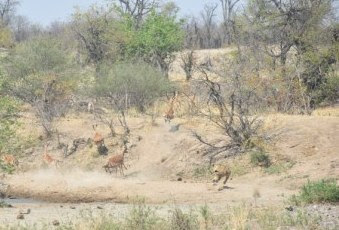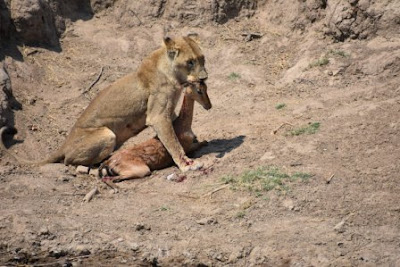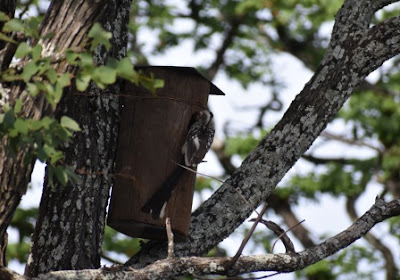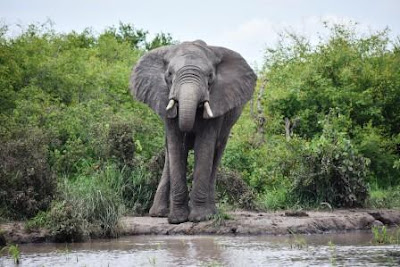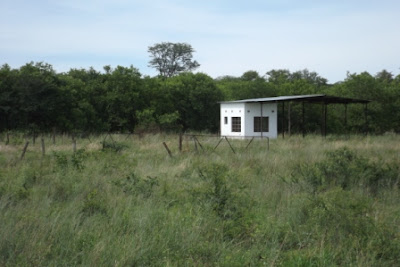Zimbabwe has been suffering shortages of
diesel and petrol since November last year. For some time we were able to keep
operating simply by being very careful with our fuel use and not going to
far-away places like Inyantue unless we absolutely had to. We managed to get
occasional supplies of diesel but by January we were so short that we had to
‘ground’ one of our three vehicles. Through
February we kept two vehicles going when necessary but our fuel stocks
dwindled and early in March we decided that only the vehicle for the Rhino
monitoring Unit would be in action, the others (with those of us that drive
them) would be grounded. That has meant that since some time in January, I have
hardly left Camp, indeed, Sue and I have only been away from the Park for one
day since Christmas, and very frustrating it has been too. I hate having
nothing to do so I’ve tried to keep busy, though some jobs are too horrible
even to think about, however bored I might be – tidying the office is one that
springs to mind. I just can’t face those tottering piles of paper that have
been kept for long-forgotten reasons and then left to gather dust.
I
have to say that if you are going to do nothing, Sinamatella is not a bad place
to do it. Sue wakes early every day to go for her morning walk so we usually
see the sun rise……….
Through the day the local birds and animals provide a lot of
entertainment. December and January are months when many of the birds are
hungry and have learnt to come and beg from us or just to join us on the
veranda to get out of the rain……….
Now that the grass has seeded there is plenty of food for the birds so we
don’t see them as much but still the various mammals such as the Dwarf Mongoose,
squirrels and Dassies are around…..
I
have not (by any means) been doing nothing for all these weeks. Our extensive range
of Land Rovers always provides work – and here I should say the following photo
is strictly copyrighted to avoid it turning up on some Land Cruiser-chauvinist
website!
Not having been out into the Park, I haven’t had much to write about but
yesterday Sue was going through photos on the computer and deleting the
unwanted ones when she found the series that goes with this story from last
year……
It was October, water in short supply, herbivores struggling for decent
food and carnivores and scavengers fat and smiling. We were approaching the
Sinamatella River Bridge when we saw a
group of giraffe gathered in the shade of a big tree. One of our on-going
projects is a survey of the giraffe population so we stopped to get the
necessary photographs. As we sat looking at the giraffe we saw two lionesses
who stood up from the vegetation in the river bed . One headed off to our right
and the other headed towards the water in a pool by the bridge……
We
were slightly higher up than she was so we could see that a group of Impala had
the same idea and were also heading for the pool from the opposite direction………
When she saw them, the lioness started a fast stalk……….
The Impala seemed not to have noticed her and continued to come down to the river……..
Until she began her charge………..
The action now took place, somewhat obscured by dust and at great speed
so we couldn’t easily follow what happened but Sue kept her finger on the
camera’s shutter button and later we could see from the photos that the lioness
very nearly caught one of the Impala that had been closest to her……..
But then she veered off to the left ……….
And we lost our view of her for a few moments until I had moved the car
forward slightly. Then we saw that she had successfully made her kill…….
Which she dragged out of the river bed and into the shade of a Croton
bush to eat……..
We
had only seen two lionesses but there were very likely some young lions around
as well so the Impala won’t have made much of a meal for them but at that time
of the year, the hunting is relatively good and I have no doubt the lions
hunted successfully again not long afterwards. At this time of year, with
leaves on the trees and water available in many, widely-spread places, the
tables are turned and the herbivores are at an advantage. Life’s always tough for someone or something though
– as, of course, those of us that live in
Zimbabwe are only too aware!










